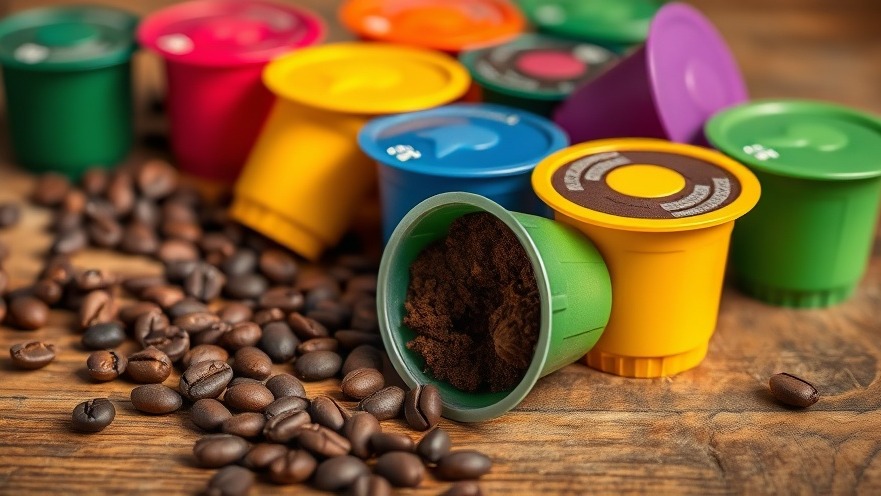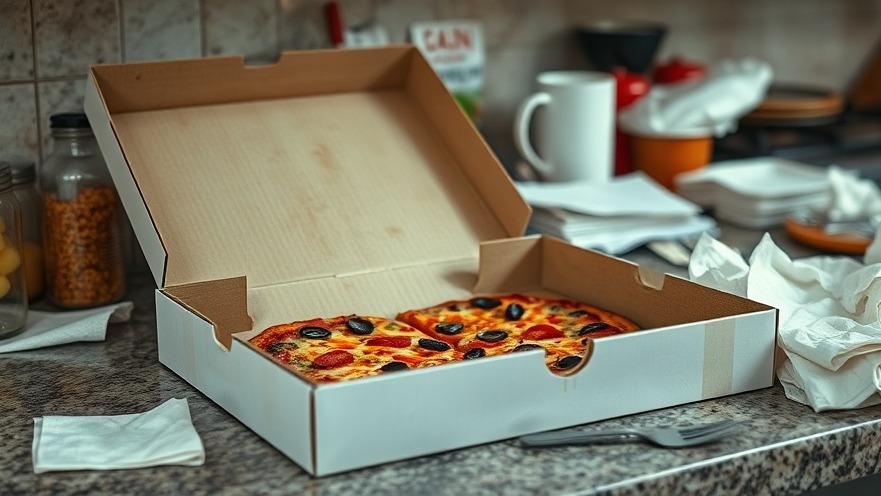
Understanding the Coffee Pod Problem
In today's bustling world, convenience often trumps environmental considerations—especially in our coffee routines. Every year, an astonishing 20 billion coffee pods are discarded, contributing to a significant global waste problem. Many are unaware that each pod, produced at an astonishing rate of 39,000 per minute, creates substantial environmental repercussions, both during its production and after consumption.
Environmental Footprint of Coffee Pods
Coffee pods come in various materials, and their sustainability varies greatly. While plastic pods can technically be recycled, their small size and contamination from coffee grounds often lead to them ending up in landfills. Aluminum pods, although more recyclable, still present challenges. They often require specialized recycling programs that not all consumers or areas have access to. More concerning are compostable pods made from PLA, which only degrade correctly in industrial composting facilities. When improperly disposed of, they can release methane, a greenhouse gas far more potent than CO₂.
Carbon Emissions and Coffee Production
The journey of coffee from farm to cup emits carbon at every stage. Producing just one kilogram of Arabica coffee releases around 15 kilograms of CO₂, primarily due to extensive land and water use, along with processing and transportation needs. While coffee pods may use slightly less coffee per serving than traditional brewing methods, the energy consumption of pod machines is higher, making them less eco-friendly options compared to classics like the French press.
Composting Coffee Pods: Is it Possible?
Many consumers find themselves confused about how to dispose of their coffee pods responsibly. Compostable pods, made from bioplastics, require specific conditions to decompose effectively—conditions that most home composting setups cannot provide. It's crucial for boutique hospitality professionals to be aware of waste disposal methods, as these decisions can directly affect their businesses’ sustainability efforts.
Building a Sustainable Coffee Culture
As eco-conscious lodging businesses continue to flourish, creating a sustainable coffee culture is essential. Offering bulk coffee options can significantly diminish pod waste, while educating guests about proper disposal can foster a more environmentally responsible mindset. Consider investing in a coffee system that minimizes waste entirely, such as French press or pour-over methods.
Ways to Make Eco-Friendly Choices
For boutique hospitality professionals eager to reduce their carbon footprints, here are a few actionable tips:
Opt for Bulk Coffee: Switch your offerings to bulk ground coffee, reducing reliance on single-use pods.
Educate Your Staff: Provide information on the environmental impact of coffee choices in your lodging spaces.
Explore Local Composting Programs: Research local facilities that can process compostable pods and direct your guests on how to properly dispose of them.
Provide Reusable Pods: Reusable pods are available for the most popular single use coffee makers.
Join the Sustainability Movement
With every small change, we can collectively reduce the environmental impact of our daily habits. Supporting sustainable coffee practices not only benefits our planet but can also enhance your guests' experience and your brand's reputation. Consider working towards zero-waste practices in every aspect of your operation, from the products you use to the services you offer.
Together, let’s brew a greener future!
 Add Row
Add Row  Add
Add 




Write A Comment